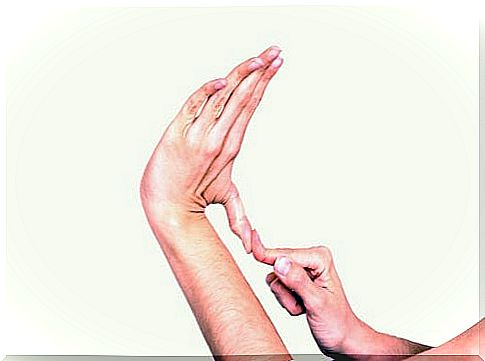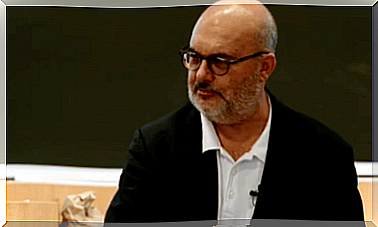Ehlers Danlos Syndrome, What Does It Consist Of?

Every day, medicine and science advance, which is why many studies are done about certain pathologies. However, there are a series of diseases that, due to their low incidence in the population, are not investigated as other more frequent ones. This makes them considered rare diseases and Ehlers Danlos syndrome is one of them.
Although each part of the world has its own assessment of what is or is not considered a rare or rare disease, the truth is that they are very low proportions of the population. For example, in Europe, diseases that affect 1 in 2000 people are considered as such, which is 0.05% of the population.
In this article we present one of these diseases categorized as rare: Ehlers Danlos syndrome (EDS), which affects the connective tissue of people. Through this article we want to support and give visibility to one of the many disorders that need to be seen and heard.

Ehlers Danlos syndrome in concept
Ehlers Danlos syndrome, also known as EDS, is a group of genetic and inherited disorders in the connective tissue that directly affect collagen, affecting the skin, joints and walls of blood vessels. Furthermore, in Spain and in other parts of the world, it is considered a rare disease.
This syndrome manifests itself in people who suffer from it as skin fragility and unusual flexibility and elasticity of the joints. However, there are various types with their own peculiarities, although it should be noted that these characteristics tend to be repeated in all cases.
How many types of Ehlers Danlos are there?
There are up to thirteen different types of Ehlers Danlos. The most common, within its low incidence, are the classic, hypermobile, vascular and cardiac – valvular. However, the complete list of types that can be found on the classes that exist of Ehlers Danlos Syndrome would be:
- Classic.
- Due to tenascin-X deficiency (type similar to Ehlers-Danlos syndrome, classic type).
- Valvular heart.
- Hypermobile (hypermobile).
- Vascular.
- Kyphoscoliosis.
- Arthrocalasic.
- Dermatosparaxis.
- From the fragile cornea.
- Spondylocheiral dysplastic.
- Musculocontractural.
- Periodontitis
- Myopathic
Symptoms of Ehlers Danlos syndrome
People who suffer from this type of syndrome begin to experience a series of changes and pains that are more and more continuous in their day-to-day lives. Although it is true that each of the types has its own characteristic symptoms, the truth is that, as we have already indicated previously, they all share a series of frequent discomforts.
It should be noted that having any of these symptoms is not binding to be able to affirm that you have Ehlers Danlos, in the same way that not suffering from any of them does not mean to indicate otherwise.
The most common is back pain. Specifically, the affected person may feel that their back is overloaded and with some ease to generate contractures. The sensation that people who suffer from it say they feel is as if they were constantly carrying a sack of cement on them.
Another of the most common symptoms is ligament hypermobility. This means that these people are tremendously elastic since their ligaments would resemble “the strings of a guitar out of tune”.
More coincidences between the various cases of Ehlers Danlos would be the laxity of the skin as well as how easily it is damaged. A simple minor blow can generate a huge bruise or certain wounds on the skin that in someone who does not suffer from this syndrome would not have any importance.
The flat feet can be another feature of people who have this syndrome. That is why they also have foot cramps and walk in a poorly balanced way. A proof of this would be in the sole of the shoes since one side will always remain more worn than the other. It also highlights the appearance of certain vision problems.
The less pleasant part of the Ehlers Danlos is accompanied by the ease of joint mobility, which causes the cartilage that joins the joints to disappear, causing displacement of the bone, causing important dislocations on certain occasions.
With this syndrome, you have to have some vigilance against developing arthritis since it can appear early. On the other hand, these people have very soft skin and, being so delicate, it sometimes seems totally velvety.

Diagnosis and treatment
In most cases, people who suffer from this disease suffer a long and dense path since it takes an average of at least 3 years to get a diagnosis and, in many cases, they have previously been told that they suffer from other diseases such as , for example, fibromyalgia.
The coincidence between fibromyalgia and chronic fatigue syndrome or lupus is that in all cases it will generally be a rheumatology specialist who will have to make the diagnosis. While it is true, they are diseases with many overlapping points and it is not surprising that they are confused.
The same happens with the treatment to follow, since there is currently no cure. Yes, it is usually necessary, after a clear diagnosis, a continuity with physiotherapy and rehabilitation sessions so that, in this way, they try to stop certain joint mobility.
Likewise, in certain types, such as the valvular cardiac type, an examination prepared by cardiology will be required to rule out Marfan syndrome, very common in this type of Ehlers Danlos and, very dangerous if it is not treated for the health of the person.
In any of the cases, when suspected or diagnosed, it is advisable to contact the National Association of Ehlers Danlos or consult the Federation of Rare Diseases (FEDER) itself to be advised on everything that is required.









